American Culinary History materials are full of representations of children and childhood: sometimes realistic, sometimes wholly fantastical, with adults present or without them.
The majority of these depict children as quite bright and shiny: clean, well-mannered, cheerful, dutiful, and so on. This is particulalry true in advertisements and other promotional materials, where the happy, well-fed, beloved child sent a powerful message to 19th & early 20th century American consumers
These representations have one thing in common: they were all created by adults. That means they open a window onto what adults, in different locales and eras, thought about children and childhood. It especially points us to what adults thought children could or should be, how they should behave, what they should want, and so forth.
The Jell-O Company made a good thing out of both showing and appealing to children in its ads. Shown below is the company's bob-haired representative, Miss Jell-O, who it also used to emphaszie how easy Jell-O was to make.
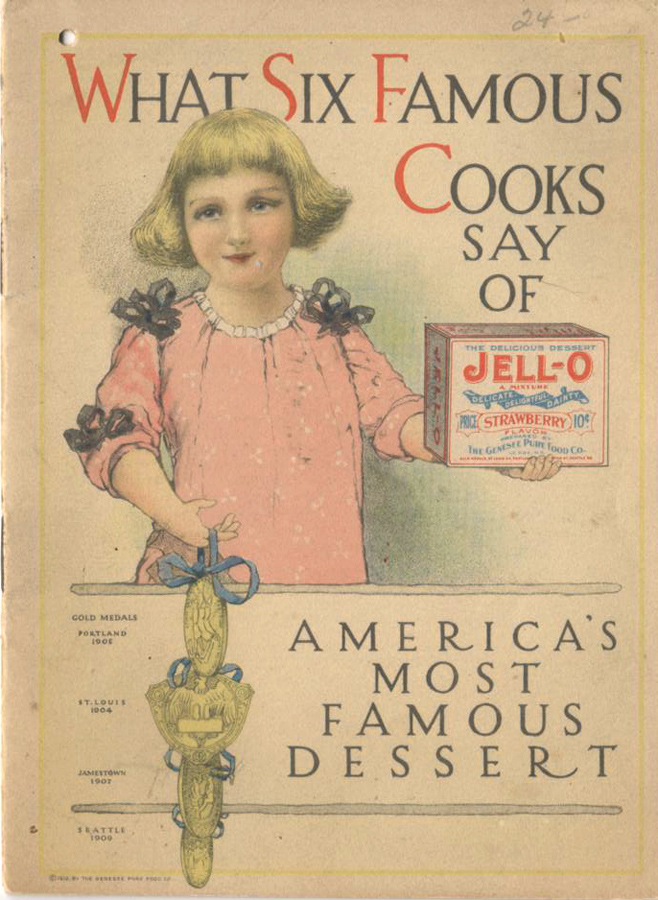
What Six Famous Cooks Say About Jello, 1912, Cover
Mere child's play:
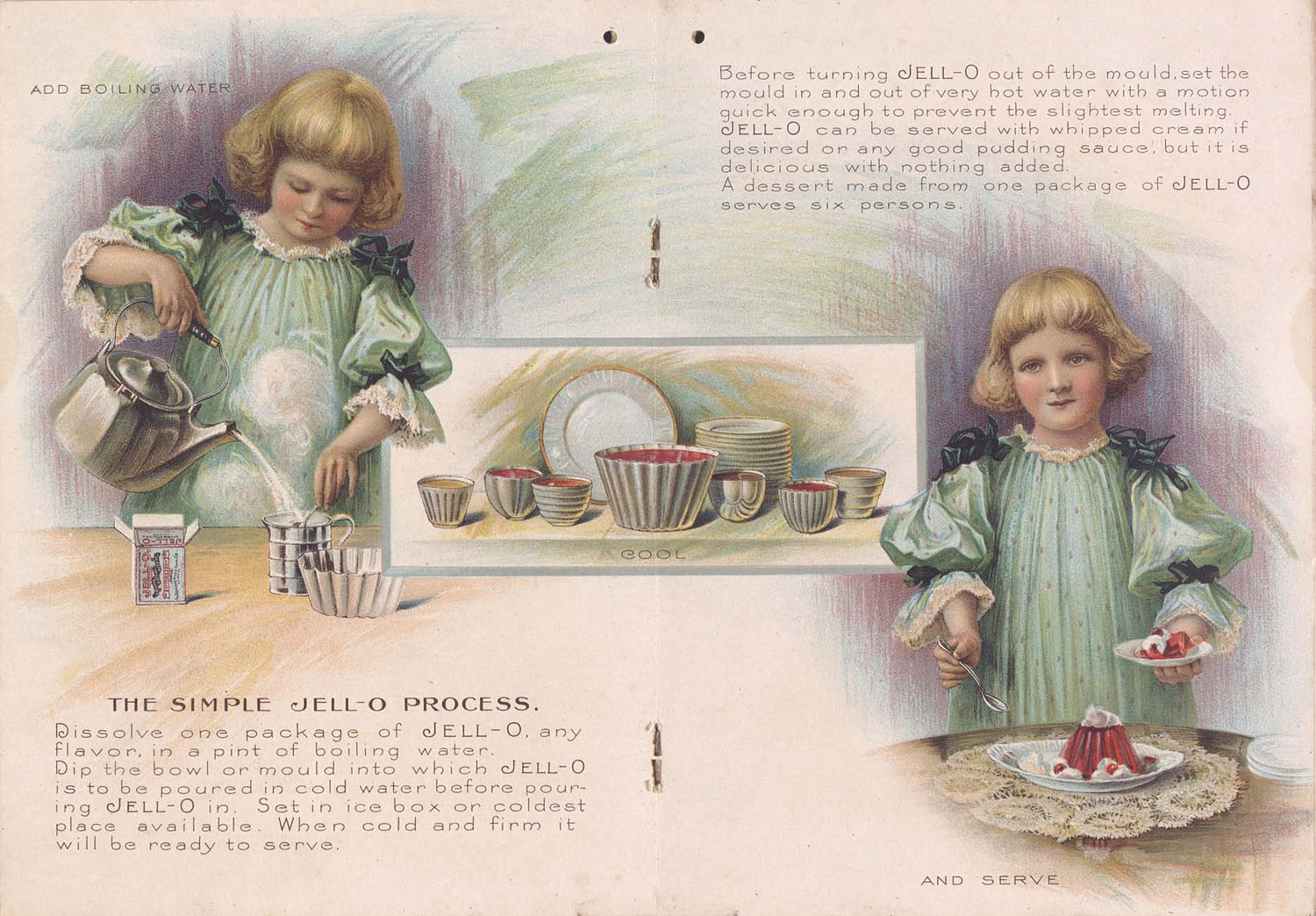
Desserts of the world (1909), Center spread
Besides fantastical images of children, there were images of child-like beings, including Kewpies (the Kewpies’ inventor Rose O’Neill did a number of illustrations for Jell-O) and this Cherub with a carving knife on the front cover of Catering for Speical Occasions, by Fannie Merit Farmer
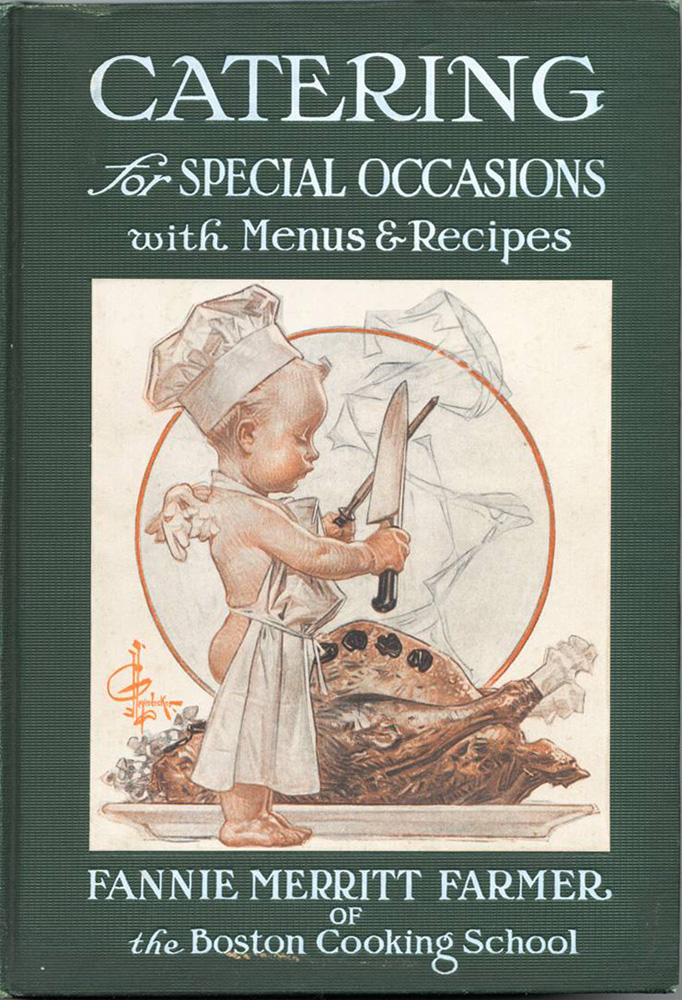
Catering for special occasions : with menus & recipes. 1911. Cover
Good children, adorable…
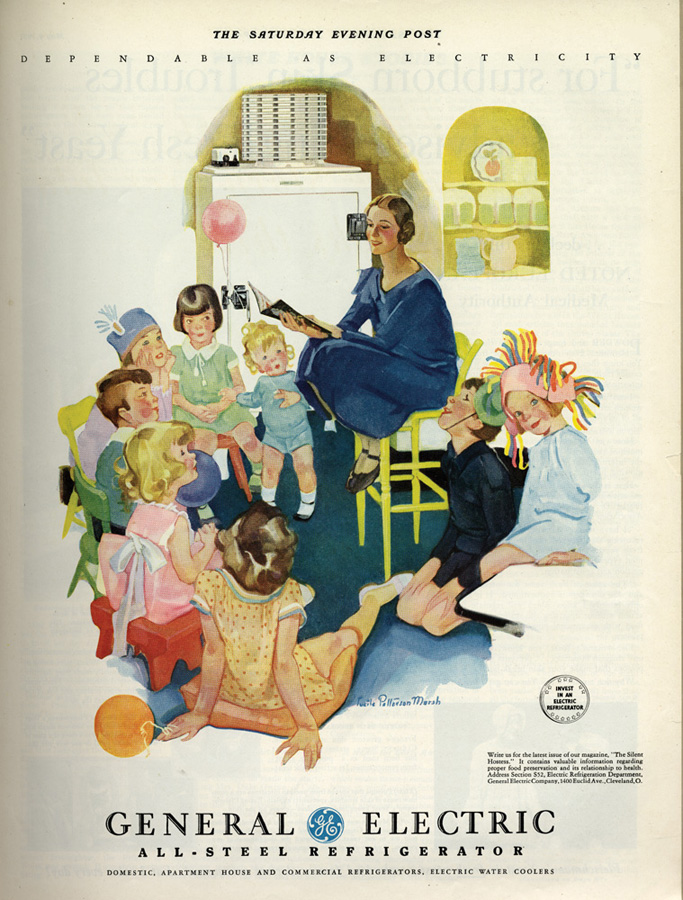
Saturday Evening Post, 1930's
...or responsible...
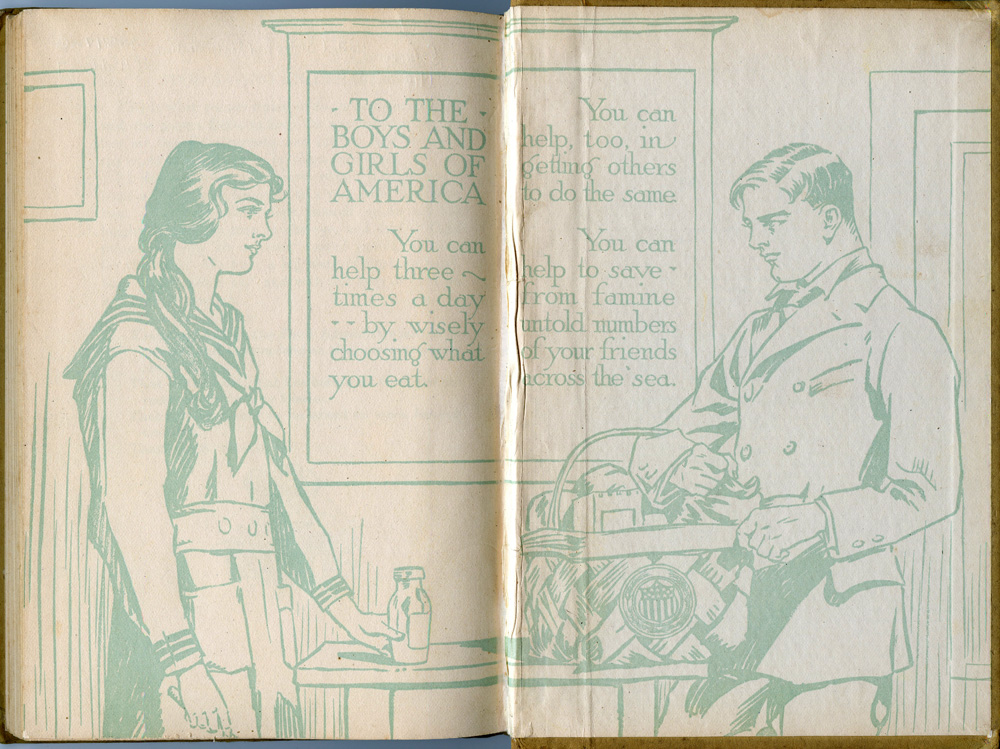
Food Saving and Sharing, 1918, inside back cover
...or both.
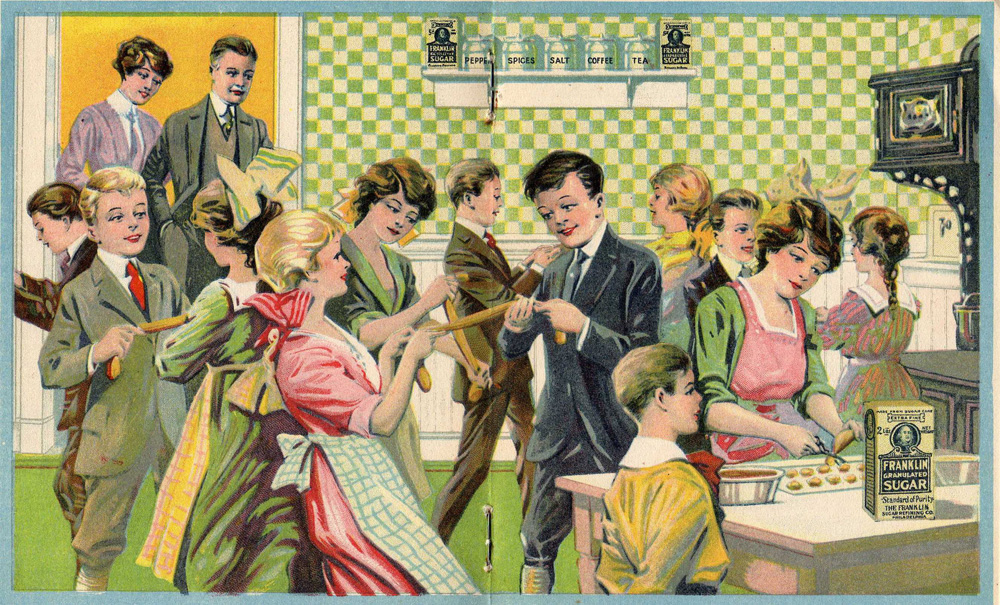
Franklin Sugar Candy Book. 1906 , center spread.
The pictures above tell a very different story than the reality to which this book, from the early days of the Home Economics Movement, testifies.
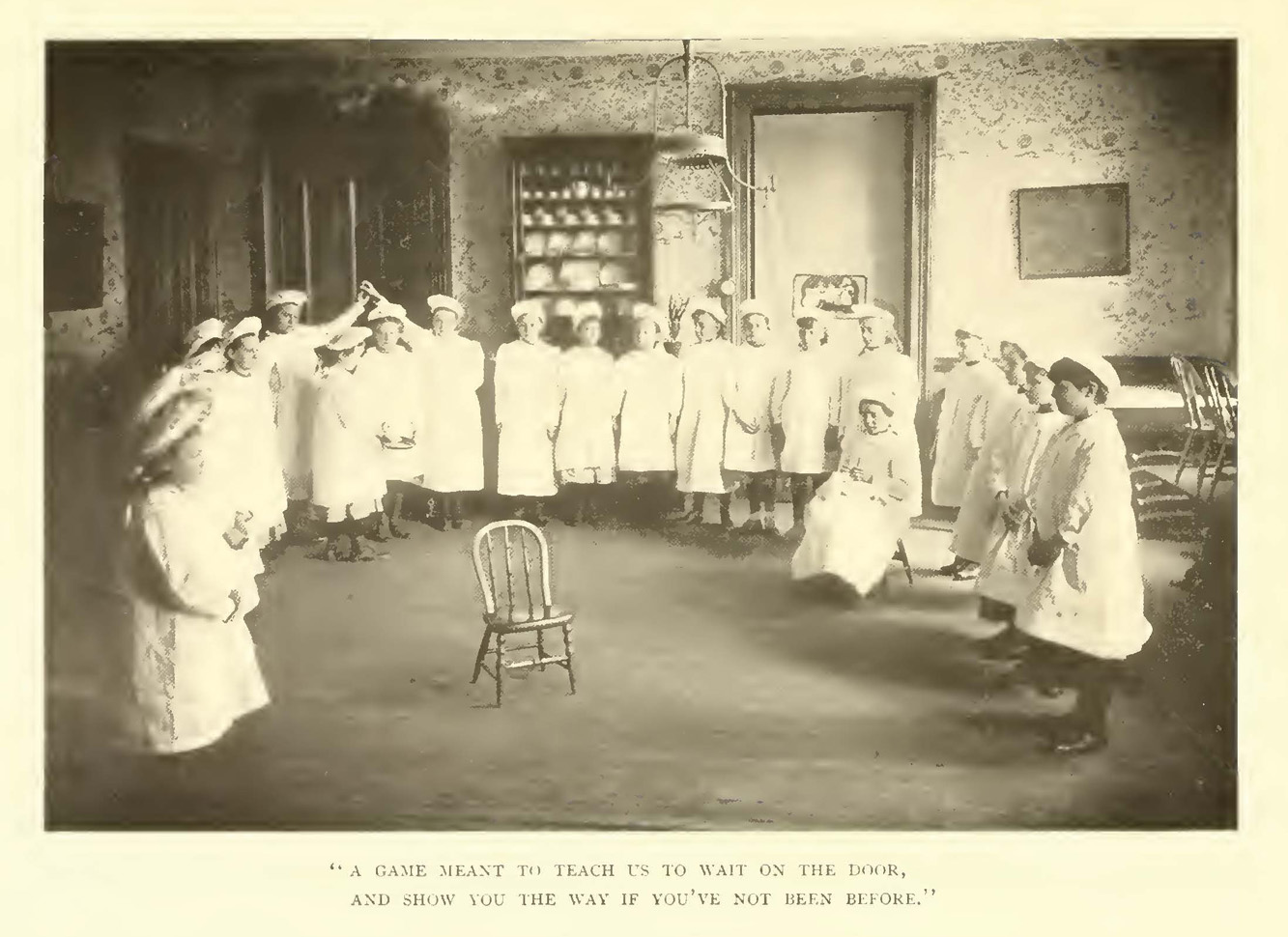
How to Teach Kitchen Garden, 1901, illustration between p.38 & p.39
This photograph illustrates a game meant to teach the pupils how to properly answer the door. A skill they will need when they grow up to be housewives, or (as the lesson shows) more likely servants. It goes with a song called “Waiting on the Door”
Here is the end of the song, and the the lesson.
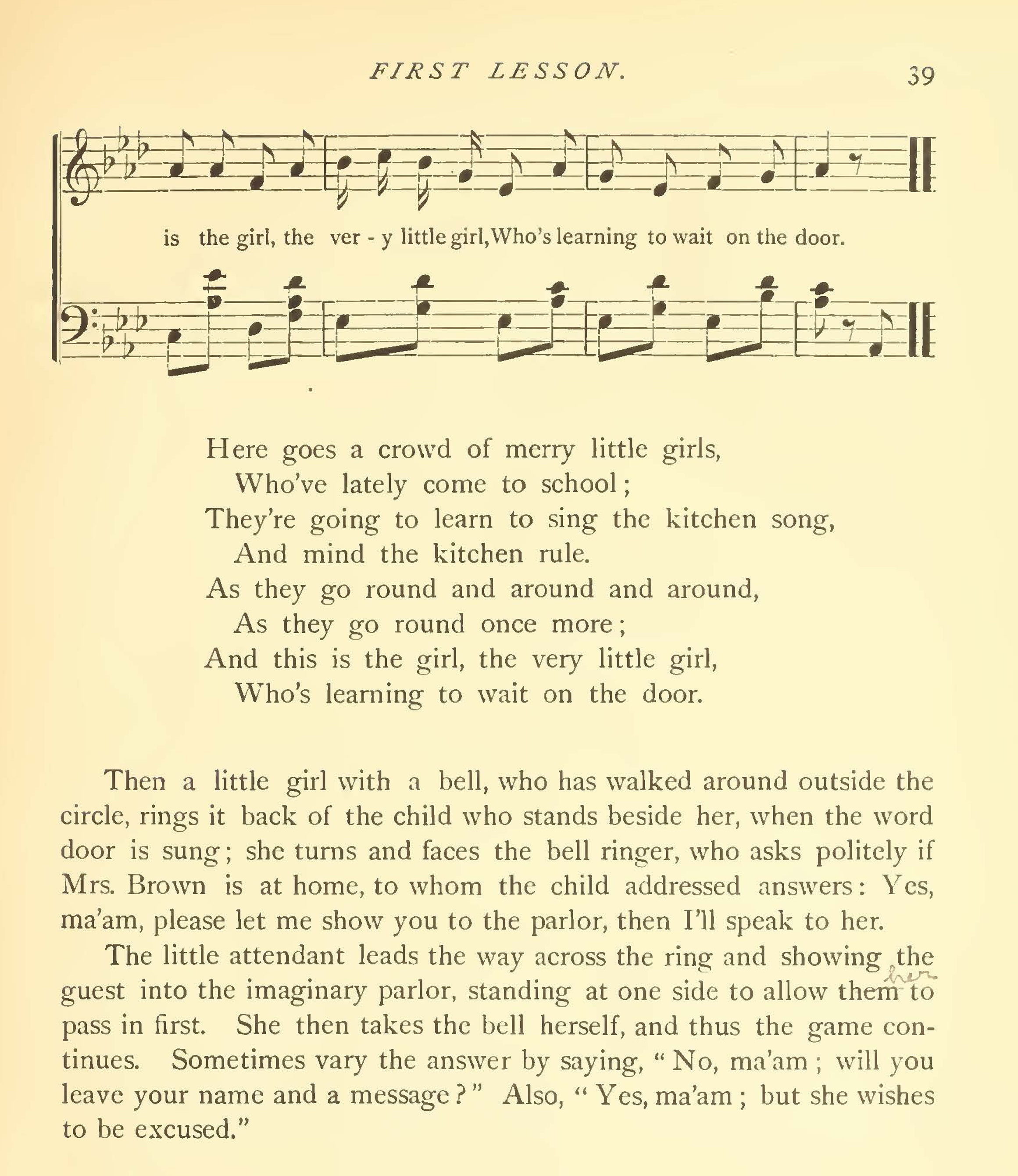
How to Teach Kitchen Garden, 1901, p.39
Further reading:
Longone, Jan. "'As Worthless as Savorless Salt'?: Teaching Children to Cook, Clean, and (Often) Conform". Gastronomica. Vol. 3, No. 2 (Spring 2003), pp. 104-110.
Repast, Winter 2007, Children & Food
Forthcoming: Small Appetites: A History of Children's Food